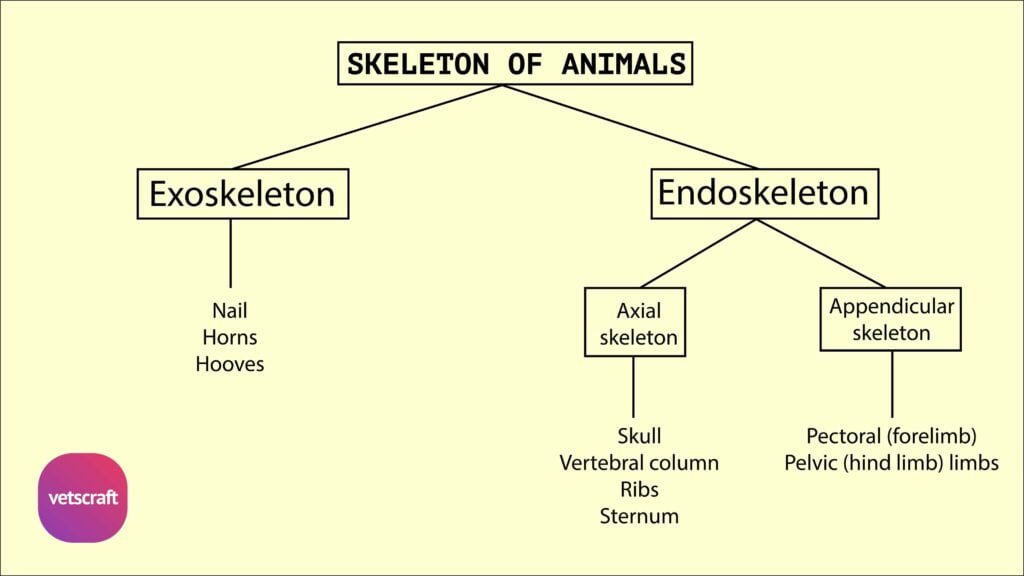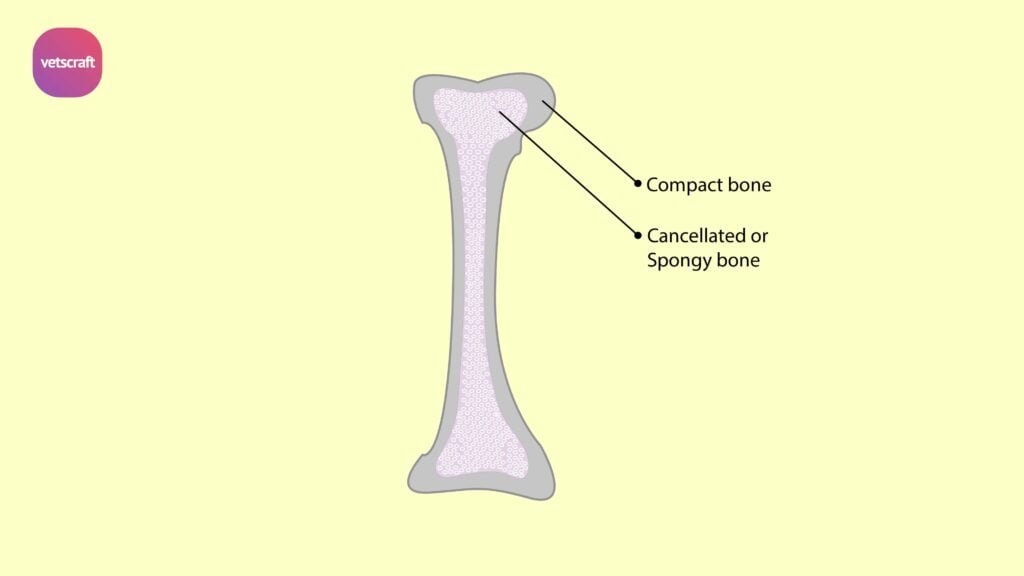TABLE OF CONTENTS
Ox
The lumbar vertebrae of Ox are six in number and are characterized by greatly elongated transverse processes and strongly curved articular processes.
Body
- The body is constricted in the middle, expanded at the extremities and much compressed from above downwards.
- The anterior extremity is less convex and the posterior less concave.
- The arches of the first three are about equal in size and similar to the last dorsal but behind, they gradually increase in breadth and height.
- The posterior notches are much deeper.
- The intervertebral foramina are often double in the anterior and are very-large further back.
Processes
- The articular processes are large.
- They are placed a little further apart and are strongly curved.
- The anterior articular processes are concave, directed medially and show the mammillary processes on their lateral aspect.
- The posterior articular processes are convex, directed outwards and project from the arch at the base of the superior spine.
- The transverse processes are elongated plates flattened from above downwards and project outwards at right angles to the body.
- The processes are all directed forwards. They are shortest in the first and the length gradually increases to the fifth and in the sixth they are shorter than those of the fifth. The inter-transverse spaces on either side are filled up by the inter transversales lumborum muscles in life.
- The spines are broad flattened plates, resemble the last thoracic and are of the same height as the last dorsal. That of the last is the narrowest of all.
- The ventral spines are rudimentary and afford attachment to the ventral longitudinal ligament.
Sheep and Goat
- Six or seven in number. In some cases there is an ambiguous vertebra at the junction of the thoracic and lumbar region.
- The anterior articular processes are strongly curved and overlap the posterior ones.
- The transverse processes curve forward and have expanded ends.
Horse
- They are six in number.
- The bodies are shorter.
- The first three have a distinct ventral spine, which subsides thereafter.
- The transverse process increases in length from the first to third or fourth and then diminishes. The first one or two slightly curve backwards and the last two or three curve forward and the third is at right angles.
- The posterior border of the transverse processes of the fifth at its medial part has an oval concave facet, which articulates with a convex facet on the anterior border of the sixth transverse process. Sometimes the fifth has small facet for the fourth also.
- The sixth transverse processes are thick at the base and thin and narrow elsewhere and curve forwards. It articulates by a large concave facet on its posterior border with corresponding facet of the sacrum.
Pig
- Six or seven in number.
- The bodies are longer and bear a ventral crest.
- The arches are deeply notched and are separated by an increasing space dorsally.
- The mamillary process project outward and backward.
- Transverse processes will not articulate with each other or with sacrum.
- The posterior edge of the root of the transverse process is marked by a notch in the anterior series and a foramen in the posterior part.
- The dorsal spines are broad and incline forward except the last, which is narrow and vertical.
Dog
- They are seven in number.
- Their bodies increase in width from first to last.
- The transverse processes are plate-like and are directed forward and downward. They do not form any joints with each other or with sacrum as in the horse.
- Accessory and mamillary processes are present.
- Spinous processes incline a little forward.
Rabbit
- They are seven in number.
- The transverse processes are long, projected anteriorly.
Fowl
- The lumbar and sacrum are fused and called as lumbosacrals.
- They are fourteen in number and these with the seventh dorsal and the first coccygeal-altogether 16 -are fused into one mass called synsacrum. This forms a rhomboid mass included between the two pelvic bones.
- The spines form a crest in the anterior third but absent posteriorly.
- The transverse ridges on the ventral face indicate the positions of the transverse processes. The extremities of all the transverse processes fuse with the medial border of the ilium.

